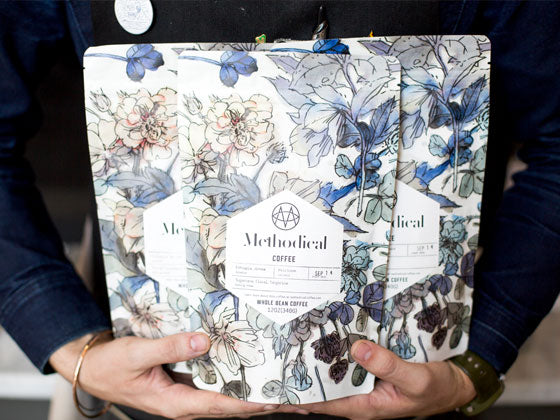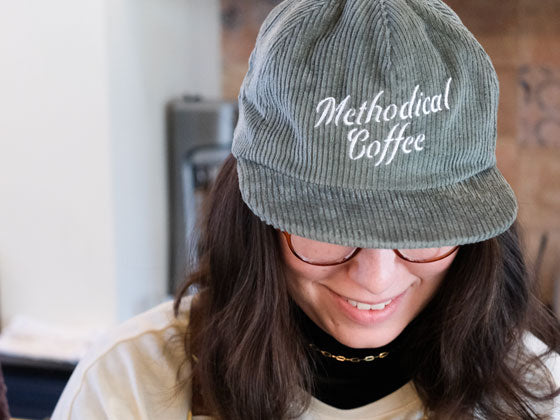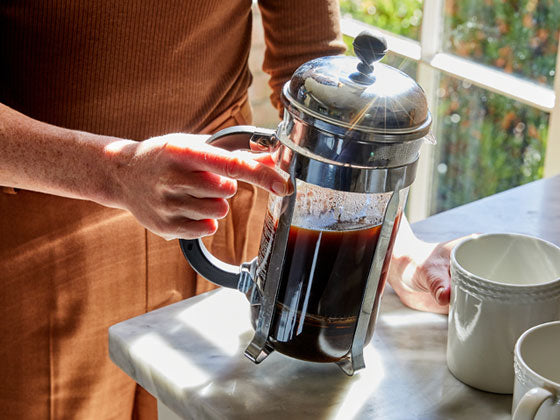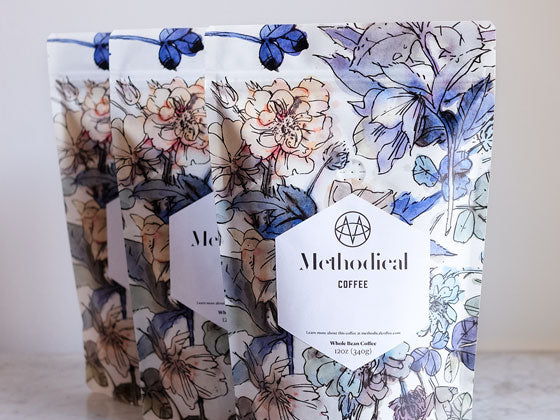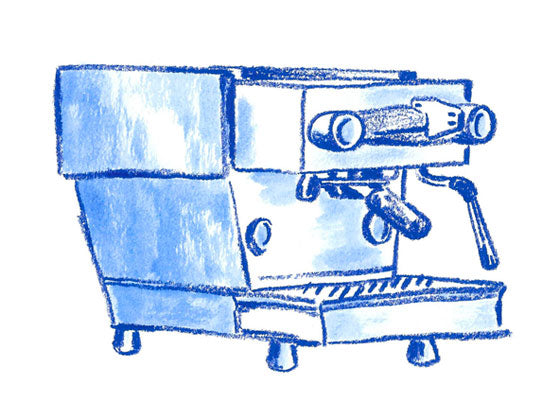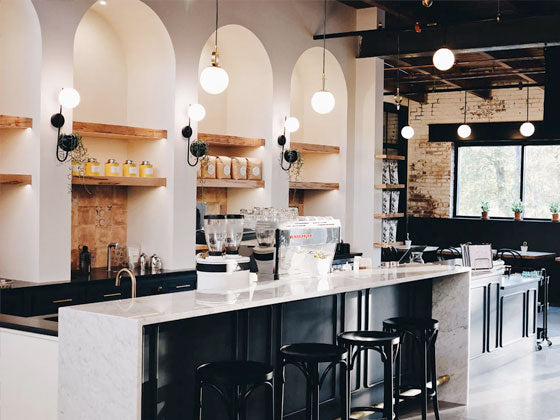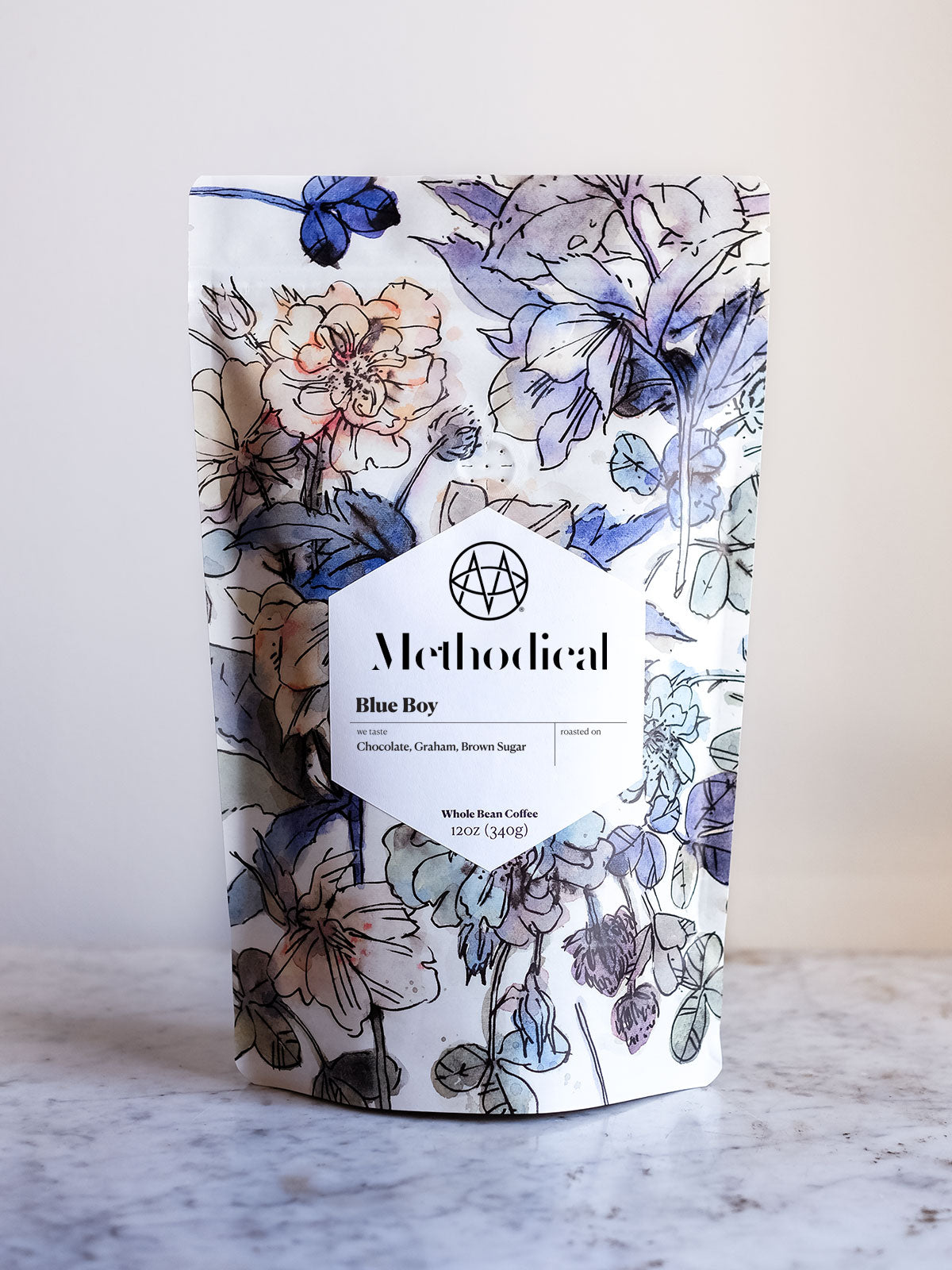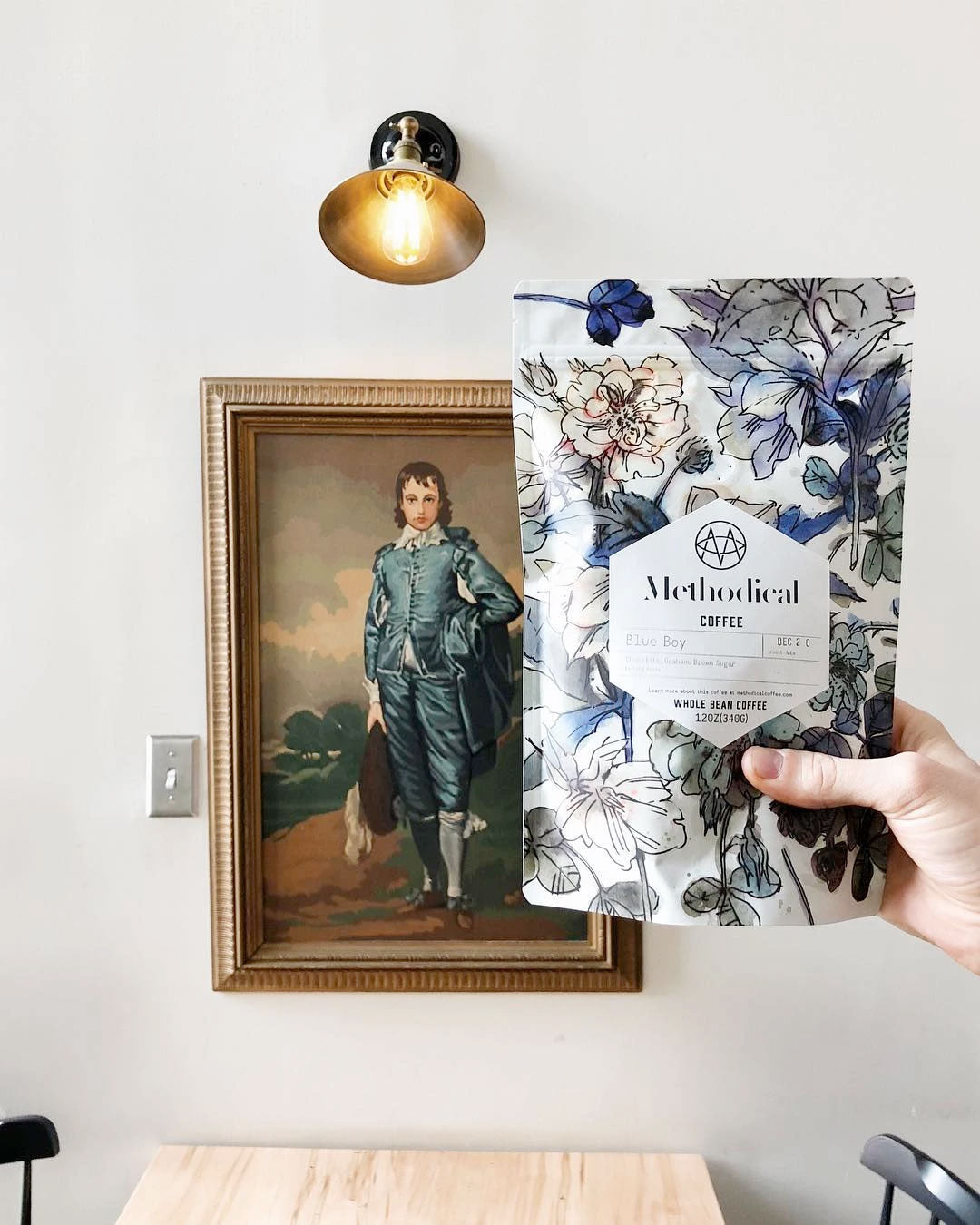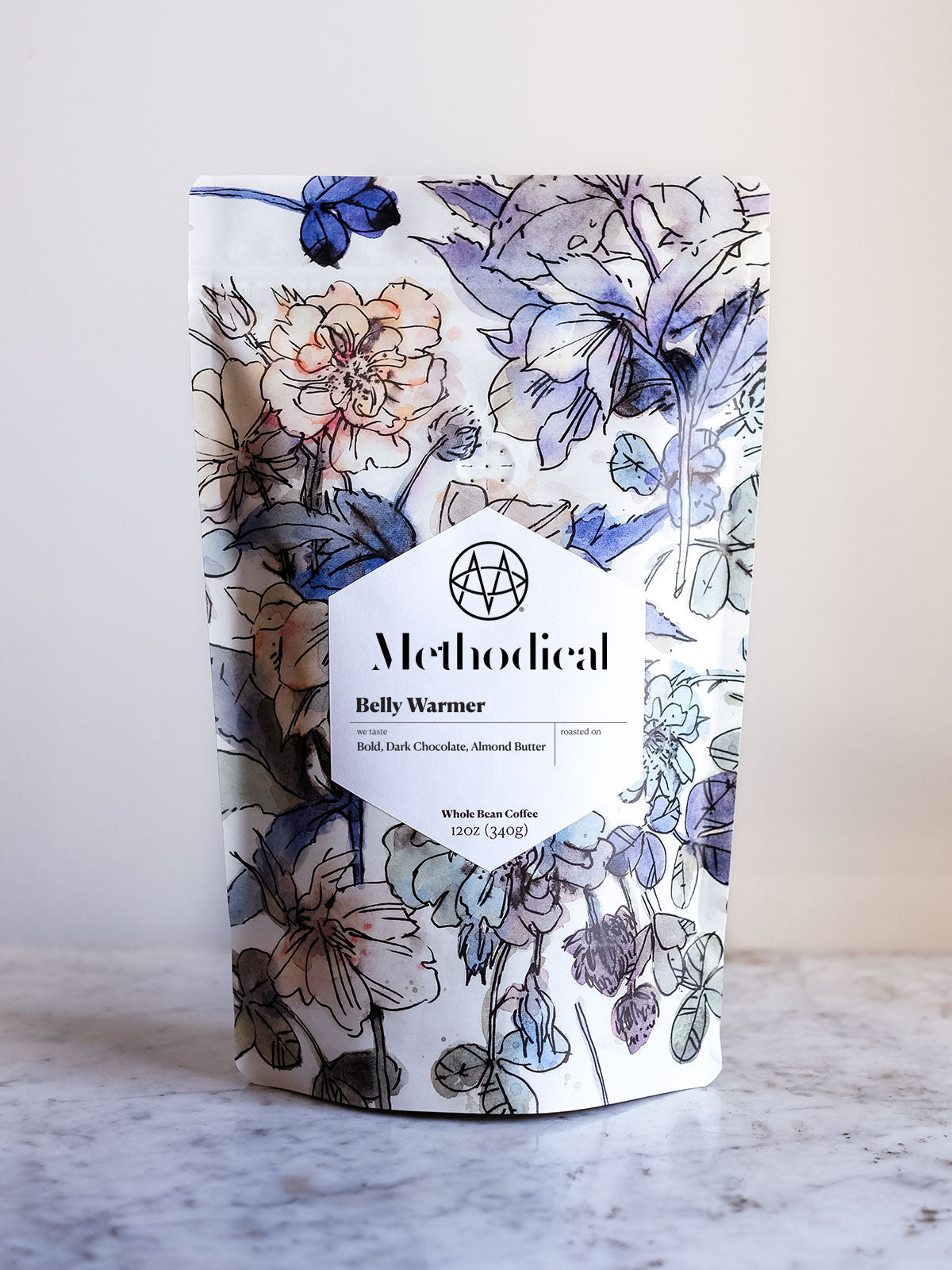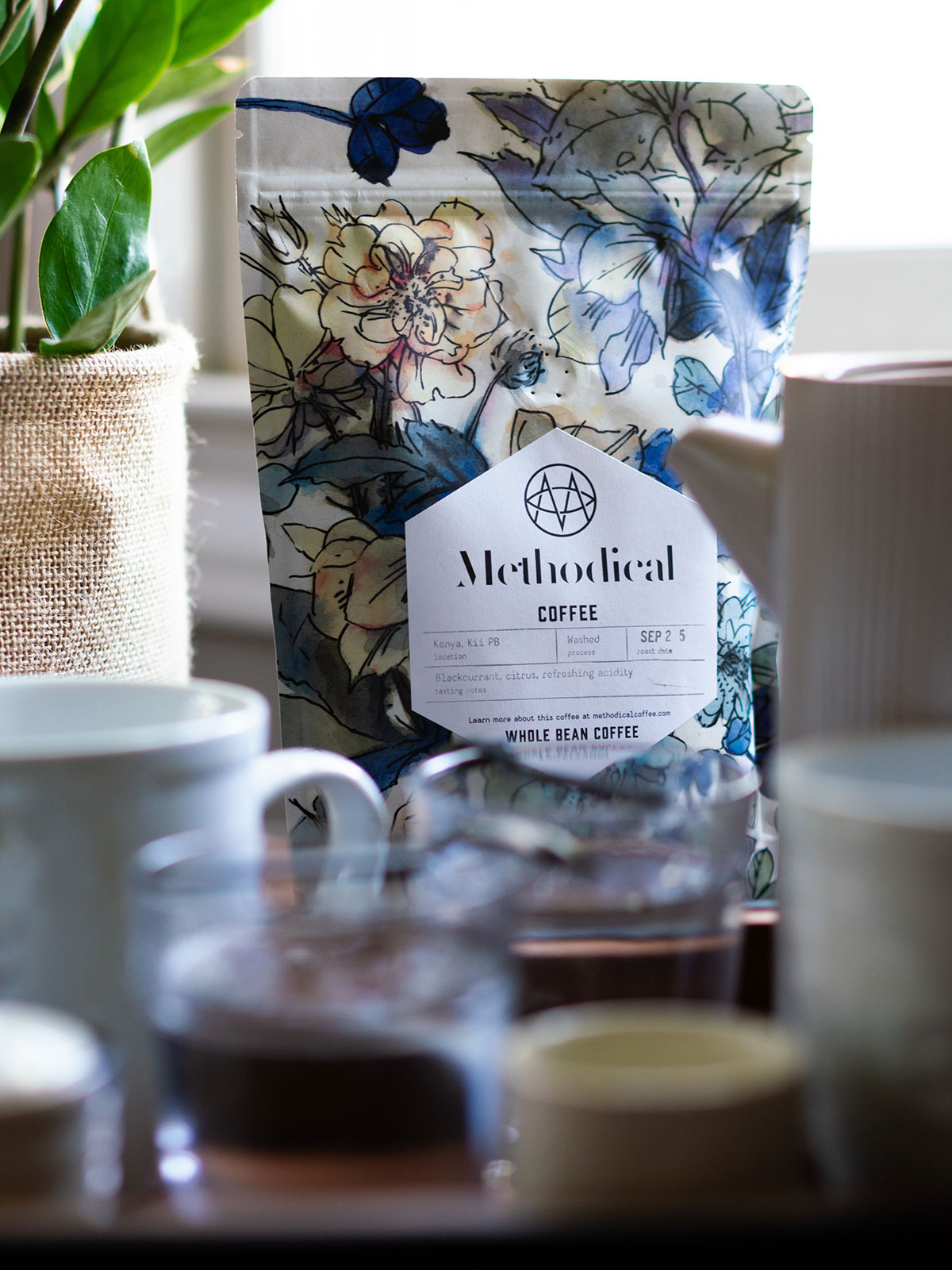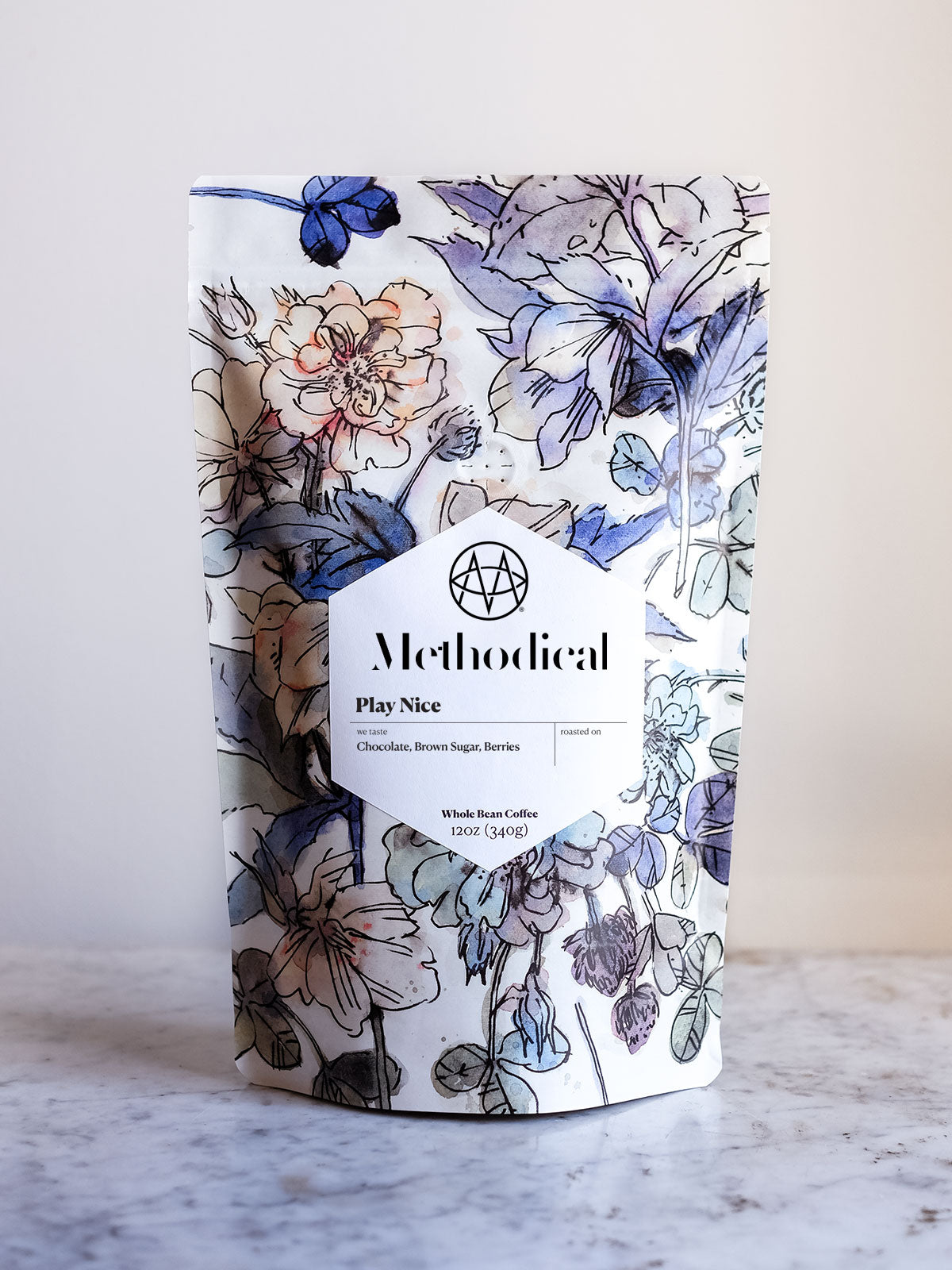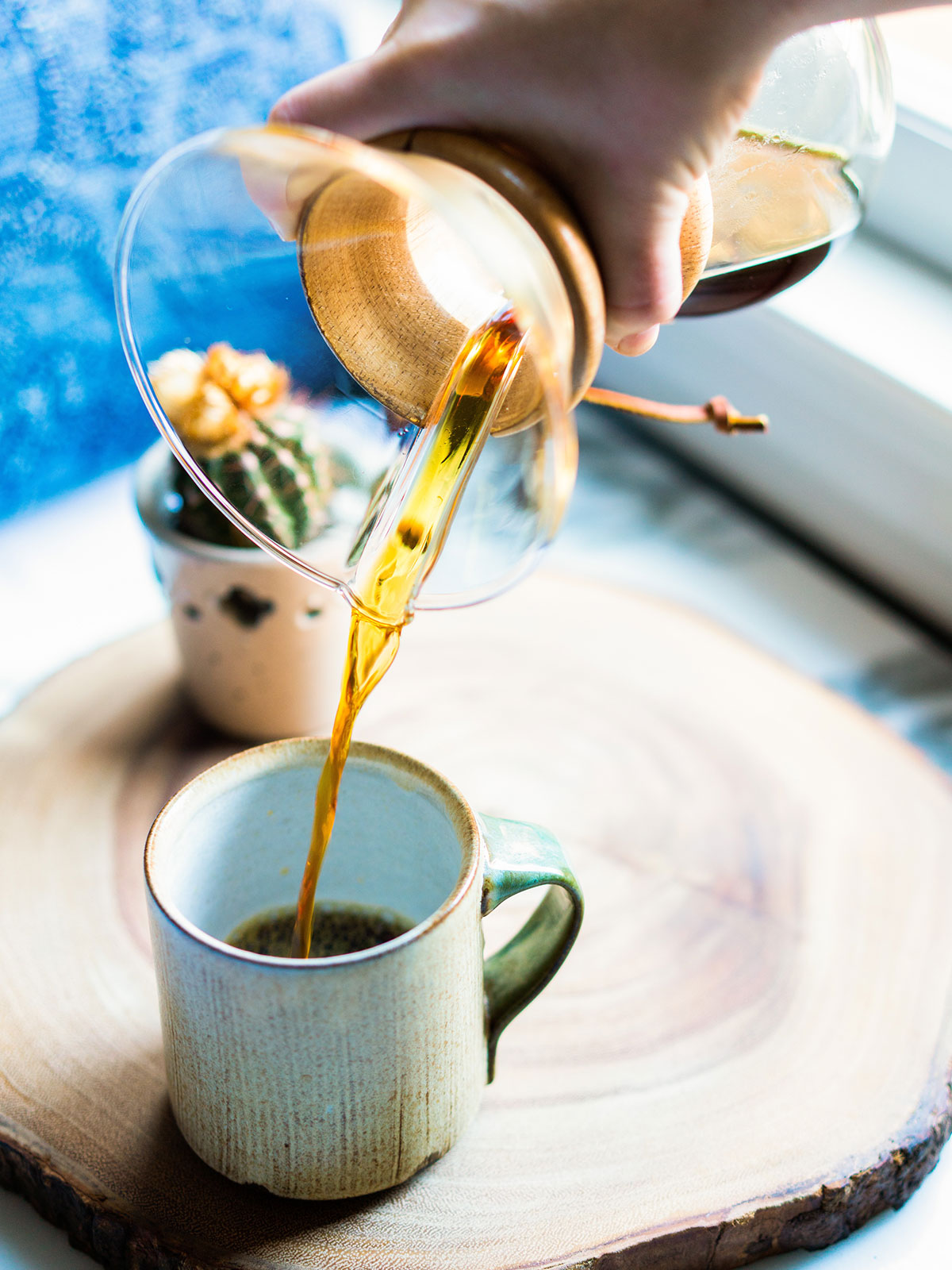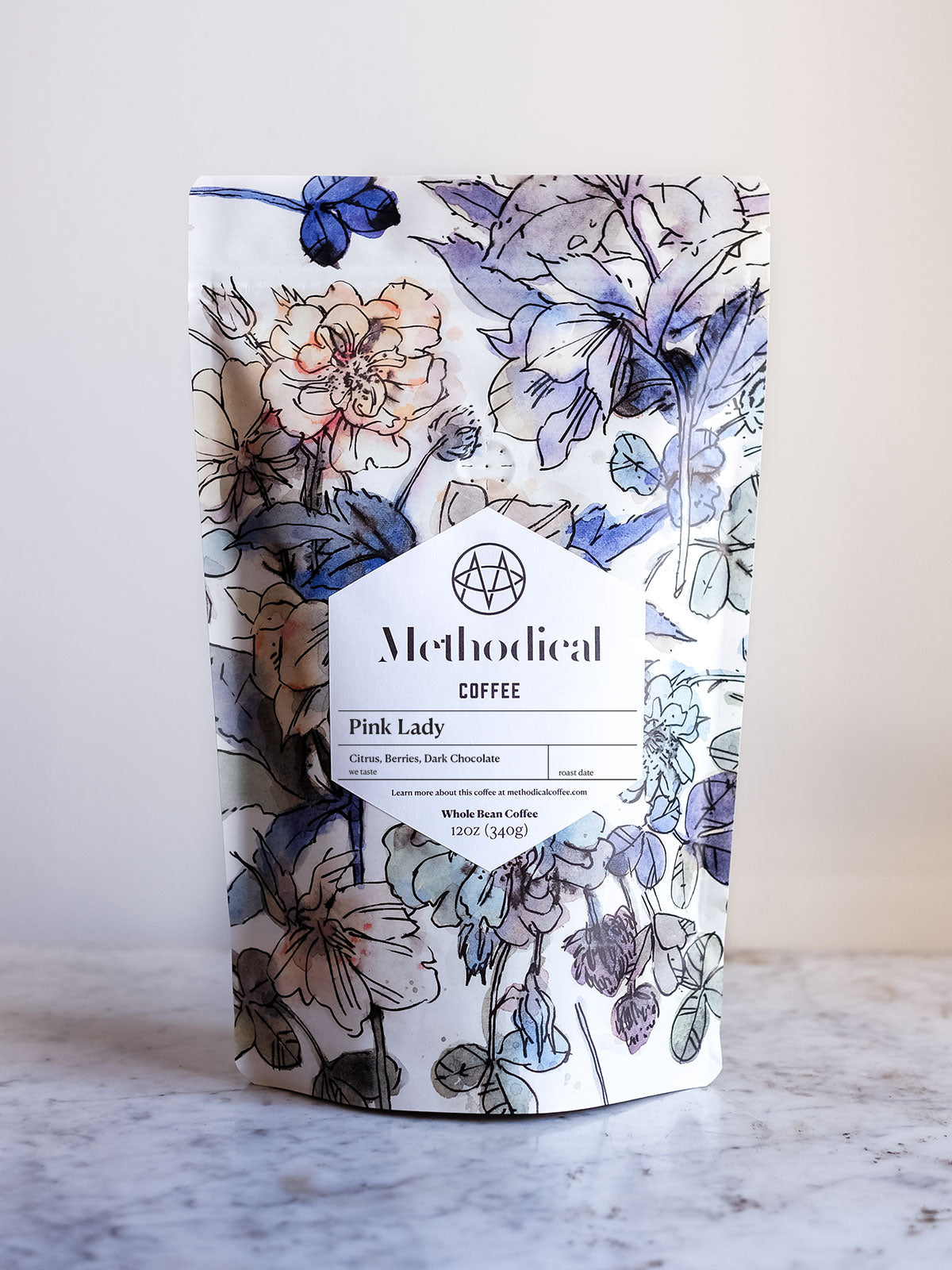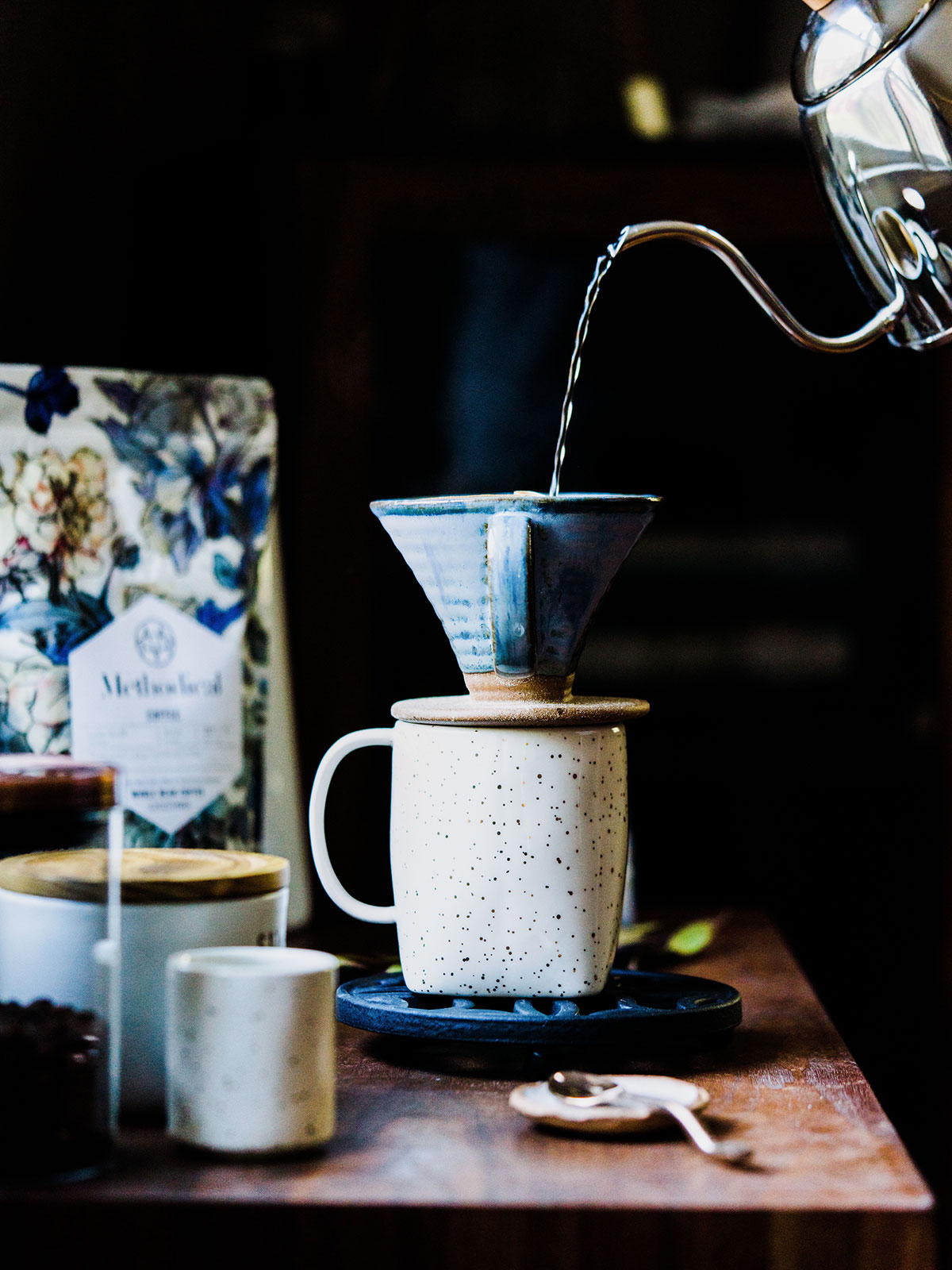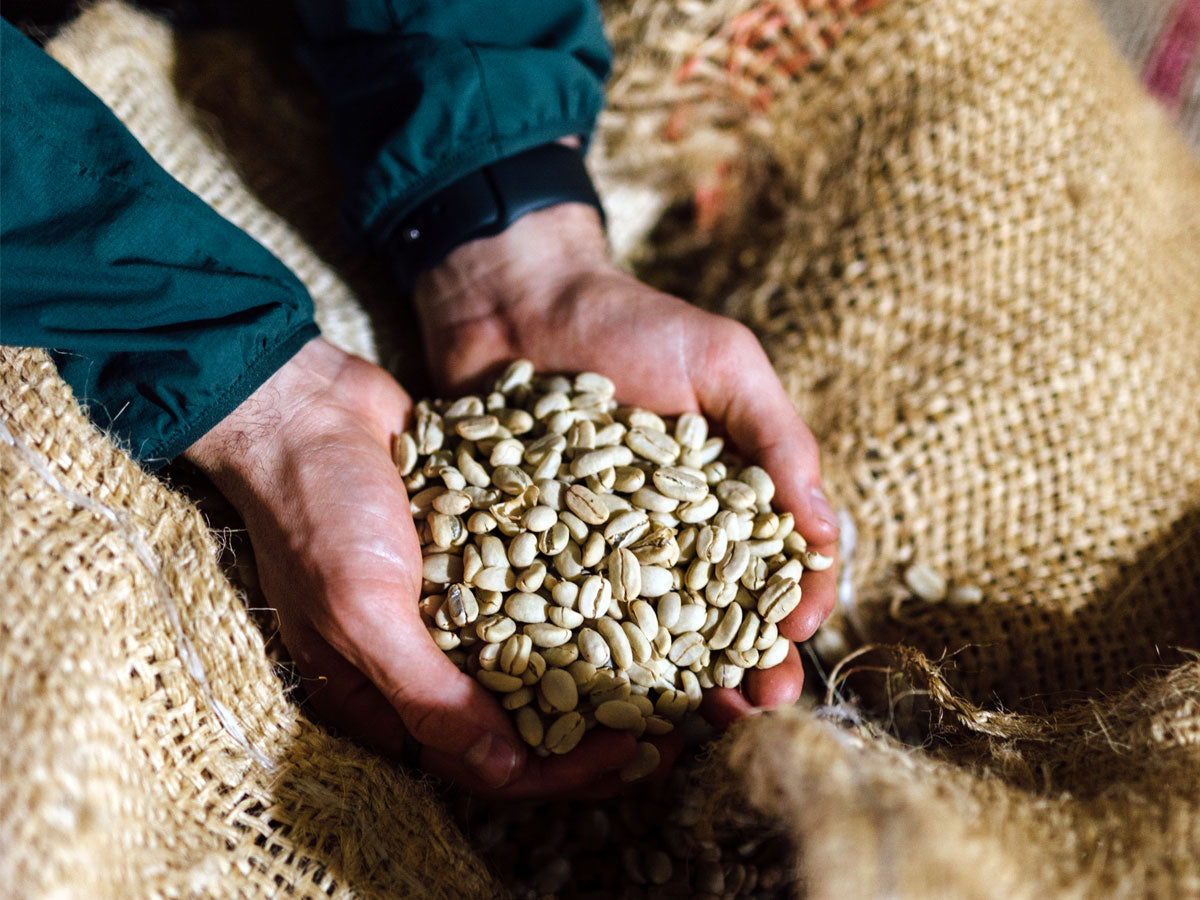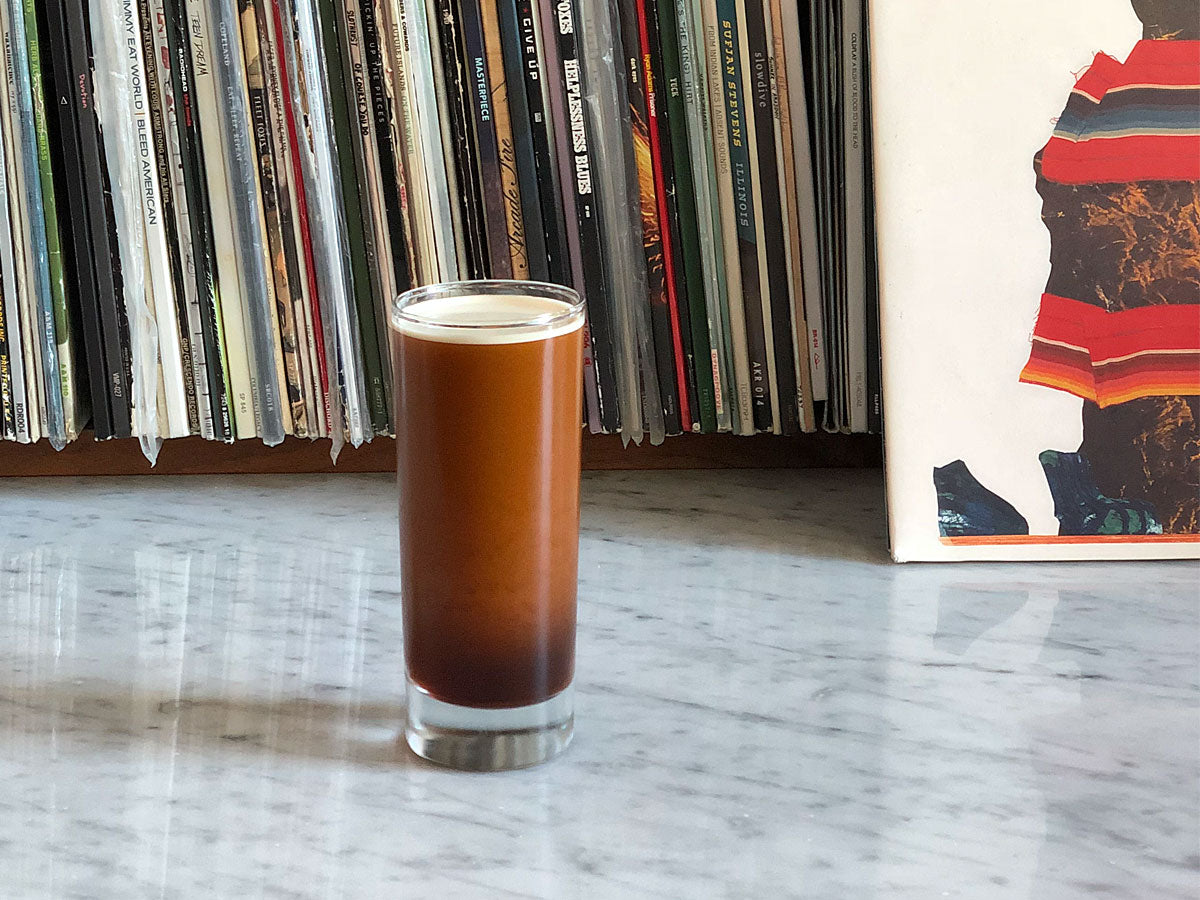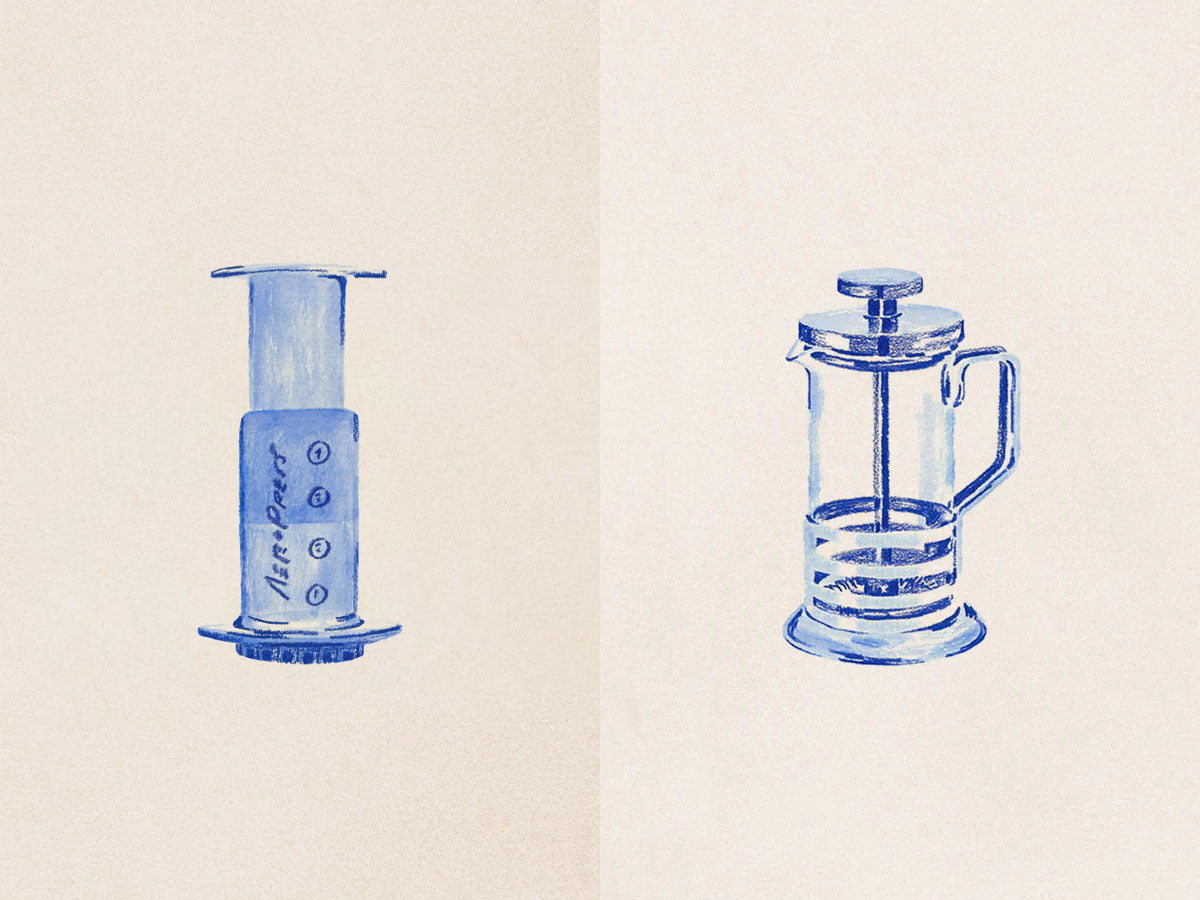Brew methods are often what we look to upgrade to improve our home coffee brewing, but knowing how to properly grind your coffee will make a massive impact on the quality of joe in your cup. In this guide, we’ll walk you through the science of coffee extraction, a grind setting guide, and what grinders we recommend for you.
Why coffee grind is important
When coffee is ground correctly it brings out the best flavor of your coffee beans. The process of brewing coffee extracts its soluble materials like caffeine, acids, sugars, lipids, and carbohydrates, all the things that give coffee its iconic flavor. The goal is to extract the proper amount of solubles to create a balanced cup. Grind setting and brew time are the two primary variables for perfecting extraction. If coffee is over-extracted (ground too fine or brewed too long) it’ll taste bitter due to the bitter solubles overwhelming the sweetness, and if it’s under-extracted (ground too coarse or brewed too quickly) it’ll taste sour due to the lack of sweet-tasting solubles getting extracted. So it’s important to properly grind your coffee to get the best flavor out of your favorite beans.
Whole bean or pre-ground?
Roasted coffee slowly loses its freshness and becomes stale over time just like most foods. This is due to oxidation or the deterioration the air has on organic materials. The greater the surface area for the air to get to, the faster the rate of its deterioration. That’s why it’s best to start with freshly roasted whole bean coffee. For the most flavorful cup, we recommend brewing coffee that’s been roasted within 30 days and brewing pre-ground coffee within two weeks of it being ground. Anything longer than this and you’ll start to notice its staleness.
Types of Coffee Grinders
Blade
Blade coffee grinders aren’t so much grinders as they are choppers chopping your beans by spinning a blade for an indeterminate amount of time. In theory, the longer you chop, the finer your grind. But blade grinders are notorious for inconsistency. Since the blade only chops what it comes in contact with, there’s no guarantee that the coffee particles will be of a consistent size. This inconsistency means the smallest particles will over-extract whereas the larger particles will under-extract which won’t produce the best cup. Though blade grinders are small and affordable, if you’re looking to get the best out of your beans, you should consider moving to a burr grinder.
Burr
Burr coffee grinders crush coffee beans by passing them through two rotating metal or ceramic burrs. Unlike the blade grinder, the fineness of the grind is determined by the space between the burrs and not the amount of time grinding. This produces a very consistent grind. There are two types of burr coffee grinders: flat burr and conical burr. Flat burr grinders have two metal rings that rotate in opposite directions whereas conical burr grinders have one stationary ring while a cone-shaped burr rotates and presses the beans into the stationary burr. The grinder used in your favorite cafe is more than likely a conical burr grinder.
Learn more: 7 Best Burr Grinders for Coffee
How to Grind Coffee Beans
Whether you're looking to grind coffee for a french press, your home coffee maker, or to make that perfect shot of espresso, follow this coffee grinding guide for all your favorite brew methods. It will give you a good starting point from which you can tweak to get your extraction just right.

Cold Brew
Cold brew is brewed with room temp or cold water which makes your brew time really long. And since your brew time is long, grinding extra coarse will ensure you’re not over-extracting your beans.
- Grind: Extra coarse
- Texture: Coarsely cracked pepper
- Ratio of coffee to water: 1:10
- Brew time: 10 hours for ready to drink cold brew. 24-48 hours for concentrates of varying strength.
Learn more about coffee to water ratios.

French Press
French presses have a metal screen to separate the coffee grounds from the water. But because the screen isn’t ultra-fine, you’ll want to grind a bit coarse to prevent a lot of grit from ending up in the bottom of your cup.
- Grind: Coarse
- Texture: Sea salt
- Ratio of coffee to water: 1:12
- Brew time: 4 minutes

Home Coffee Maker
Home coffee makers are basically just automated pour overs. You want the water to move through the beans and into the carafe at a rate that isn’t too fast or too slow. A medium grind optimizes for that flow rate.
- Grind: Medium Coarse
- Texture: Table salt
- Ratio of coffee to water: 9-10g per “cup”
- Brew time: 5 min

Pour Over
For pour overs, water should move through the beans and into the carafe within your target brew time. A medium grind optimizes for that flow rate.
- Grind: Medium
- Texture: Table salt
- Ratio of coffee to water: 1:15
- Brew time: 3:30 - 4 minutes

Aeropress
Aeropress has a faster brew time than a pour over, but since you’re giving it a little extra oomph by applying pressure, a medium grind size will help you hit the extraction target.
- Grind: Medium
- Texture: Table salt
- Ratio of coffee to water: 1:12
- Brew time: 2:30

Espresso
Espresso is ground fine but not like a powder. If it’s too fine, the water will create channels instead of saturating the coffee equally.
- Grind: Fine
- Texture: Ground cinnamon
- Ratio of coffee to water: 1:2
- Brew time: 30 - 40 seconds
Learn more: How to Pull a Shot of Espresso

Turkish Coffee
Turkish Coffee brews extremely fast. So you’ll want an extra-fine ground to ensure you don’t under-extract the coffee.
- Grind: Extra fine
- Texture: Flour
- Ratio of coffee to water: 1:10
- Brew time: 2-3 minutes
Coffee Grind Size Chart
For your convenience, we’ve made this handy dandy cheat sheet you can download and print or keep on your phone if you’re ever in a spot where you need some coffee grinding reminders. Download the full cheat sheet.
How to Clean a Coffee Grinder
Over time your coffee grinder can get full of oils and particles from past grinds. This build-up will cause your grinder to not grind well and contaminate your fresh coffee. Regularly giving it a quick cleaning will prolong its life and keep it grinding well.
- Unplug the grinder
- Break down its parts
- Use a toothbrush to scrub the old grounds off the burrs.
- Either vacuum or wipe out loose grounds.
- Reassemble
Note: Never use water to clean the parts of your grinder. And though some websites recommend it, avoid grinding rice. If you want to use a cleaning solution, try Biocaf Grinder Cleaner.
How to Grind Coffee Without a Grinder
One of our worst nightmares is being in a situation where we need coffee but grinderless. Here are a few options to keep in mind:
- Run to the grocery store. Nearly all grocery stores have coffee grinders in their coffee section. If it’s convenient, take your bag of coffee with you and use their grinder. Pick up some tasty pastries while you’re at it.
- Mortar and Pestle. It’ll take a little time and effort, but a mortar and pestle is a great tool for grinding coffee.
- Blender or food processor. Blenders are just large blade grinders. Though it’s a bit difficult to get a uniform grind, it is possible to grind them enough to brew an acceptable cup.
- Hammer and towel. Really any heavy and blunt object will do. Place your beans on a woodblock, cover them with a towel, and go to town on them until the particles are a consistent size.
Best Coffee Grinders
There’s a lot of coffee grinders out there, here are a few of our favorites by price point and task.

Best budget coffee grinder
Baratza Encore. The Baratza Encore is a conical burr grinder. It’s extremely simple to use and is built very well given its affordable price point.
Best manual coffee grinder
Hario Mini Mill. The Hario Mini Mill hand grinder is great for traveling or camping. It features ceramic conical burrs. Ceramic burrs tend to be more desirable than steel because they tend to retain their sharpness longer than steel.
Best professional coffee grinder
Baratza Vario-W. Baratza is known for their entry-level grinders, but they make incredible professional models as well. The Vario-W is a great alternative to the more expensive Forte. While the Forte may be better for a grinder that gets used 25+ times a day, the Vario would easily do the job for a professional-grade home grinder. Versatile enough to handle anything from espresso to cold brew, and it even has a built-in scale to weigh your coffee as it is ground.
Best espresso coffee grinder
Eureka Mignon Silenzio. The Eureka Mignon line of grinders has a variety of features and is optimized for espresso, though the Silenzio is recommended because of its ability to easily reach a consistent medium grind when needed. It’s extremely easy to clean, near-silent in operation, and very versatile. This would make the perfect companion for a home espresso setup.
At this point, you’re probably eager to put your new knowledge to work. To really tell how well you’ve improved your coffee grinding quality, start with some good beans. We recommend our Blue Boy blend. It’s a balanced blend that’s rich and bright, smooth without any bitterness. And it’s our most popular coffee.
You might also like:
